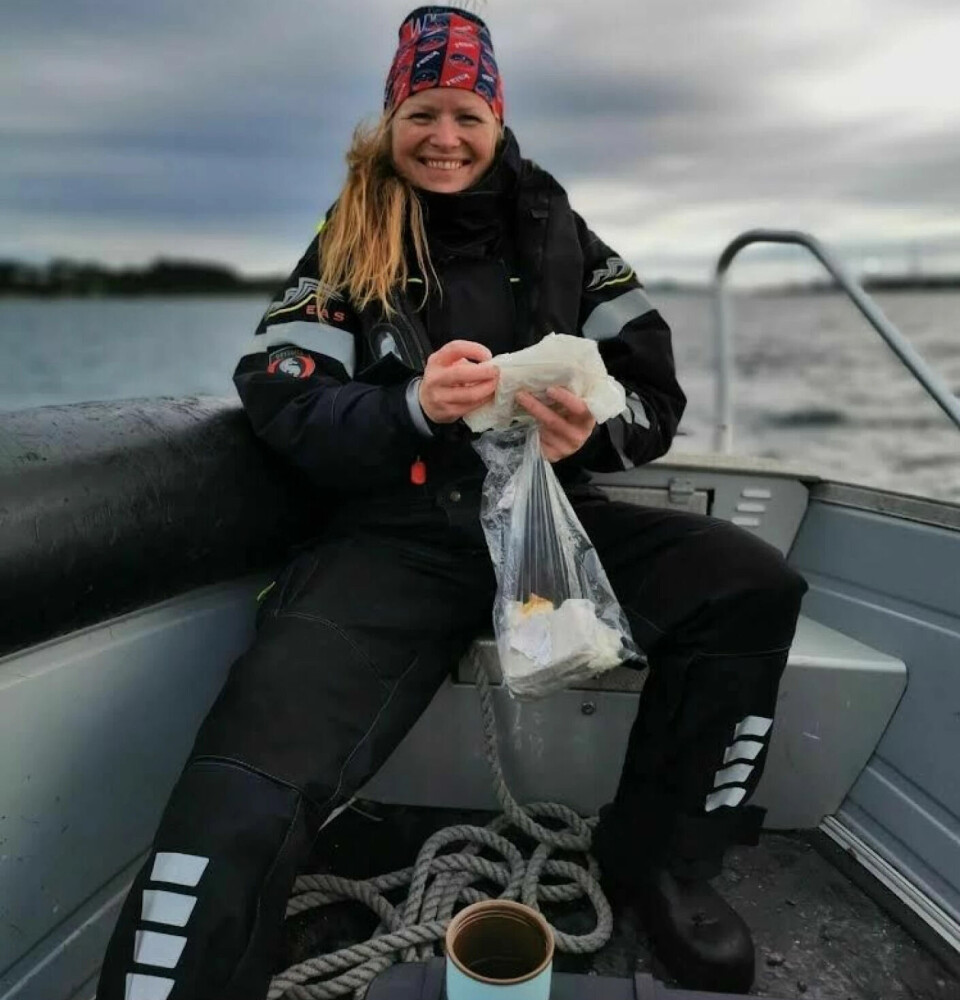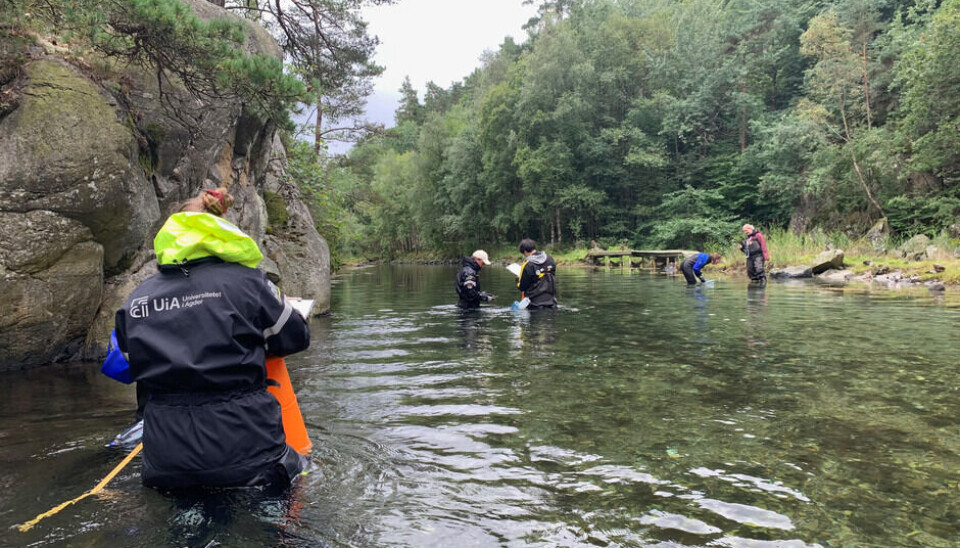THIS CONTENT IS BROUGHT TO YOU BY THE University of Agder - read more

Pacific oysters: From invasion to innovation
The Pacific oyster is here to stay. Research indicates that new potential uses for the invasive species may be found.
"Let me show you something."
Professor Ane Timenes Laugen extracts something from the windowsill in her office at the University of Agder. She holds up various specimens of Pacific oyster shells.
“We found this long one in a bay in Kristiansand. They had piled up and grown in large clusters to form a reef. In fact, Pacific oysters can become so invasive that they have been shown to alter the water flow in some areas,” she explains.
A natural consequence is that water and oxygen conditions can change.
Invasive species
When we label the Pacific oyster as an invasive species, it's inherent in the name: it doesn't originally belong in Norwegian waters.
During the summer, people might associate it with cut feet from an unfortunate step. Some shells have an almost razor-sharp surface, which has led to significant cleanup efforts in bathing areas.

One issue that has received a lot of media attention is how it may pose a threat to biodiversity - such as the fear that it might outcompete the native flat oyster and mussel.
But it’s not all bad, according to the researcher.
“We have seen, for example, that mussels can use beds of Pacific oysters as their habitat or increase their survival by hiding among larger Pacific oysters," Laugen says.
She explains that the same applies to other marine animals and plants.
"It is exciting to observe the biological changes in the Wadden Sea, for example, where it has shifted from complete takeover to coexistence,” she says.
New areas of use
In a report from 2022, the professor and co-authors highlight the potential of the Pacific oyster when it can no longer be fought. The article is part of the Harvesting of Pacific oysters project, which is funded by the Nordic Council of Ministers.
The reports within the project primarily focus on Pacific oysters as a source of food. Alternative uses could involve raw material for feed and food production. The shells could be used for building and road materials, soil improvement, or lime in poultry production.
The question is how realistic it is to achieve large-scale production, the researcher emphasises.
“We’ve also collaborated with artists in Sweden who want to process the shells into burnt lime for use in art and interior design. It will be exciting to see how that progresses,” Laugen says.
Friend or foe?
Researchers encourage recognizing the positive contributions of the Pacific oyster and thus adopting a more pragmatic approach to the species.
Lead author Stein Mortensen summarises it as follows:
“The Pacific oyster is a new Nordic resource. In order to take advantage of the potential this species provides, it is necessary and appropriate to find ways to utilise it optimally, both as a source of food and as raw material for other uses. This is only possible if we balance the different interests. We should seek to increase the value of the oyster and recognise the positive ecosystem services the species provides, even though the species is considered invasive.”

The report provides a comprehensive list of advantages and disadvantages compiled by the experts.
“We believe it is important to manage the species dynamically. Measures suitable where the species is well-established should differ from where it's newly established,” Laugen says.
Parasites are also monitored
Parasites are a factor that researchers will be closely monitoring in the times ahead.
“I'm going to open 25 Pacific oysters lying at home that I’ll check for a parasite that was detected this spring. A new species usually brings with it new parasites, and that's one of the things we'll be keeping an eye on,” Laugen says.
The parasite burrows into the shell of the Pacific oyster and is difficult to detect until it is opened. It creates blisters that consist of mud and the parasite’s faeces.
Naturally, it is unappetising.
Natural filtration
For researchers, there are plenty of interesting uses to consider in the future.
“From Kristiansand to Gothenburg, there are incredible amounts of Pacific oysters. We have not yet, for example, studied whether the natural filtering properties of oysters can counteract eutrophication,” Laugen says.
Eutrophication is perhaps better known as overfertilisation through agricultural runoff. It affects water quality and the living conditions of other species in the ocean.
Oysters are low-trophic species. This means that they are low in the food chain. They obtain nutrients by filtering water through their system.
Low-trophic species can form part of a more sustainable diet. In this context, the filtering itself is what's interesting.
“Imagine if all the tonnes of Pacific oysters that are still in our coastal waters help to reduce eutrophication,” she wonders.
Reference:
Mortensen et al. 'Stillehavsøsters i Norden: Datainnsamling og bestandsvurderinger som grunnlag for forvaltning og høsting av nordiske bestander av stillehavsøsters, Crassostrea gigas' ( Pacific Oysters in the Nordic Region: Data collection and stock assessments as a basis for management and harvesting of Nordic populations of Pacific oysters, Crassostrea gigas), Report by the Nordic Council of Ministers, 2022.

This article/press release is paid for and presented by the University of Agder
This content is created by the University of Agder's communication staff, who use this platform to communicate science and share results from research with the public. The University of Agder is one of more than 80 owners of ScienceNorway.no. Read more here.
More content from the University of Agder:
-
This researcher has helped more economics students pass their maths exams
-
There are many cases of fathers and sons both reaching elite level in football. Why is that?
-
How we used plants to protect ourselves from evil
-
What is it like for nurses to promote health behind bars?
-
This can make life easier for new maths teachers
-
Norwegian women were burned at the stake here




































